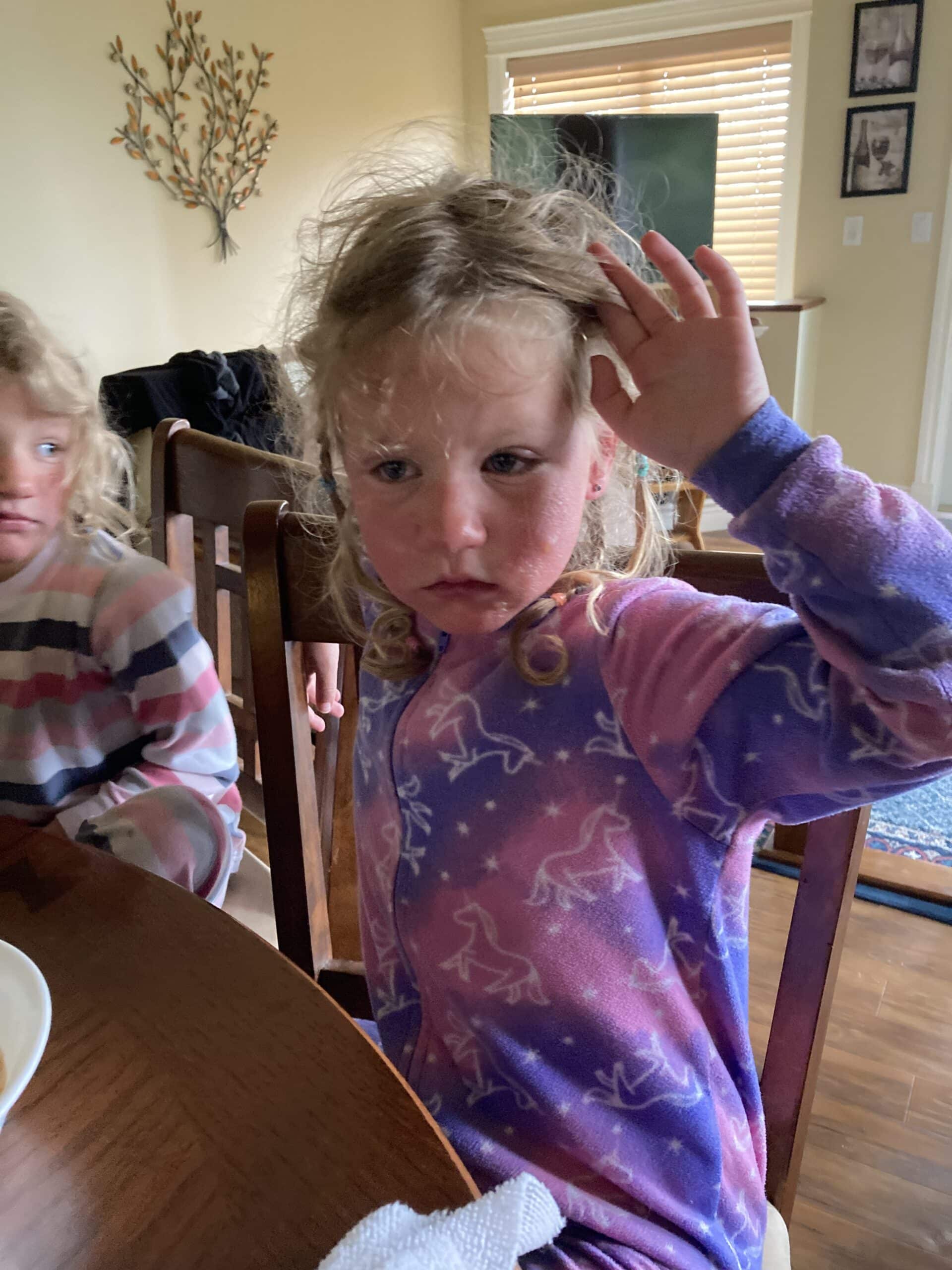By Lisa Houle | September 27, 2022
When you’re young, summer is a time for no school, no worries, and having fun playing outside all day. Unfortunately, invasive species sometimes have other ideas.
When Doug and Sandra Nimmo’s grandchildren came to visit them in Fintry, BC for the July long weekend, the children were happily playing in the yard and picked an array of plants for a bouquet. At the end of their fun day, Sandra washed up the girls and they went to bed.
Unknowingly, the girls had also picked a beautiful, but invasive plant that is toxic to people, livestock and wildlife when it’s consumed or when its white, sticky sap contacts the skin. It can even lead to blindness if it gets into the eyes. Contact with skin can cause swelling, redness and blisters.
The reaction to the plant caused quite the commotion the next morning.
“They got out of bed, and I was shocked to see their faces puffed up with blisters. I went to the store and bought some allergy medicine which helped but I didn’t have a chance to find out what caused the reaction because we were taking the girls back to Alberta that day. A month later, we came back to our house, and I used my app to see what the shrub was. It was Myrtle spurge and it was everywhere in the surrounding area,” said Sandra. “The grandchildren were okay, they laughed when they saw their faces in the mirror and it only took about a week and a half to clear their skin. We went to visit my sister in Vernon, BC shortly after this and she had the same shrubs in her backyard not knowing what they were. She doesn’t have them anymore – as soon as I told her she removed them right away!”

Doug recently contacted ISCBC through our online form to let us know about the incident. Dave Ralph, Senior Manager of Operations, quickly responded to Doug by phone to acknowledge the plant pictures he sent were of Myrtle spurge, then sent him a factsheet on Myrtle spurge and how to control it.
“By sending his report in to us Doug was able to determine what caused the incident and we were able to give resources on medical care and removal of the species. We never want to see this happen to anyone, especially children. We are always available for information on invasives,” said Dave.
Myrtle spurge (Euphorbia myrsinites) is a striking plant with a neat geometric structure that does well in hot, dry conditions. Allison McCabe, Senior Lead, Outreach at ISCBC, is familiar with this plant and urges caution when coming in contact.
“The genus Euphorbia is notorious for its highly toxic and irritating sap. As a horticulturist I’m always careful when working with this genus, but many people are not aware just how nasty the sap is,” she said. “If you already have this plant present in your garden and are trying to remove it, small infestations can be hand-pulled or dug up but be sure to use caution and wear long sleeves, pants, and gloves.”
Besides being toxic, Myrtle spurge is an extremely aggressive grower that rapidly takes over disturbed areas, roadsides, and gardens. Currently, it is mainly found in the Okanagan region of BC which has a favorable climate for this Mediterranean plant. You can also still find it for sale at some garden centres, likely due to consumer demand and lack of knowledge. Allison is trying to change all that.
“With our PlantWise program, we are working with growers, retailers, and consumers to spread the word about which invasive species shouldn’t be sold and grown in BC while providing non-invasive alternative suggestions with our free Grow Me Instead resource. Some great alternatives to Myrtle spurge include Lanceleaf Stonecrop (Sedum lanceolatum) a beautiful native succulent that thrives in hot, dry conditions or rock rose (Cistus sp.) which is drought tolerant and a good choice for rock gardens and other dry, sunny sites,” said Allison.

To learn more on how you can stop the spread of invasive plants in your community, take a 10-minute learning break with our free PlantWise course.
Have you had an interaction with Myrtle spurge or a concerning encounter with a different invasive species? We want to hear from you. By reporting invasive plants, we can track infestations and identify areas of priority. Get in touch by reporting directly using our online form or by emailing Lisa at lhoule@bcinvasives.ca.
Lisa is a Communications and Outreach Coordinator at ISCBC. She values a diverse environment and connecting with others about environmental protection. In her spare time Lisa enjoys spending time at the ocean and beach combing for sea glass. You can reach Lisa at lhoule@bcinvasives.ca
Share


















